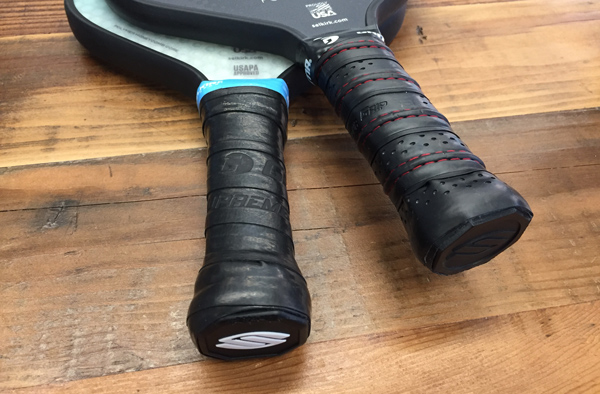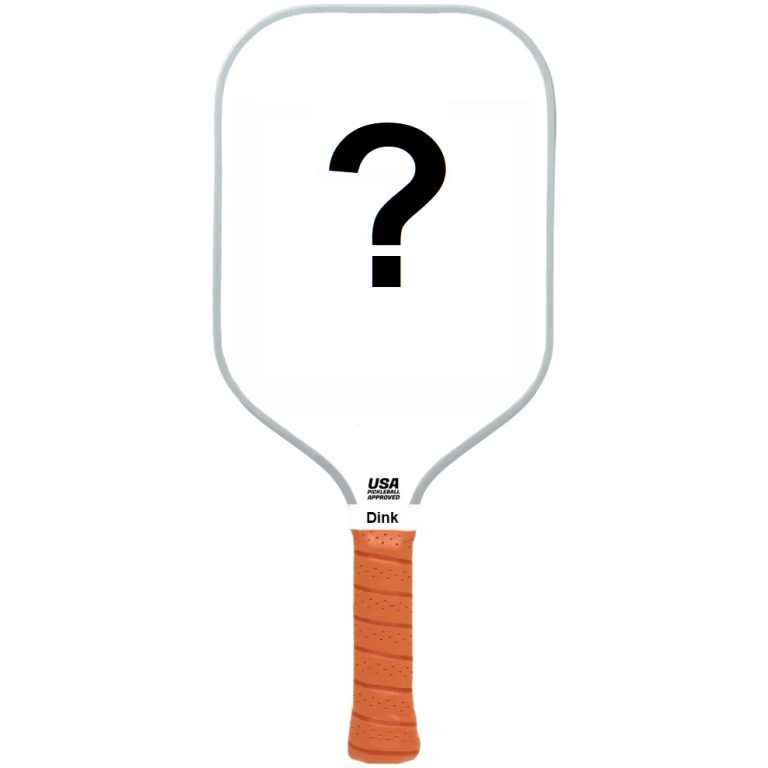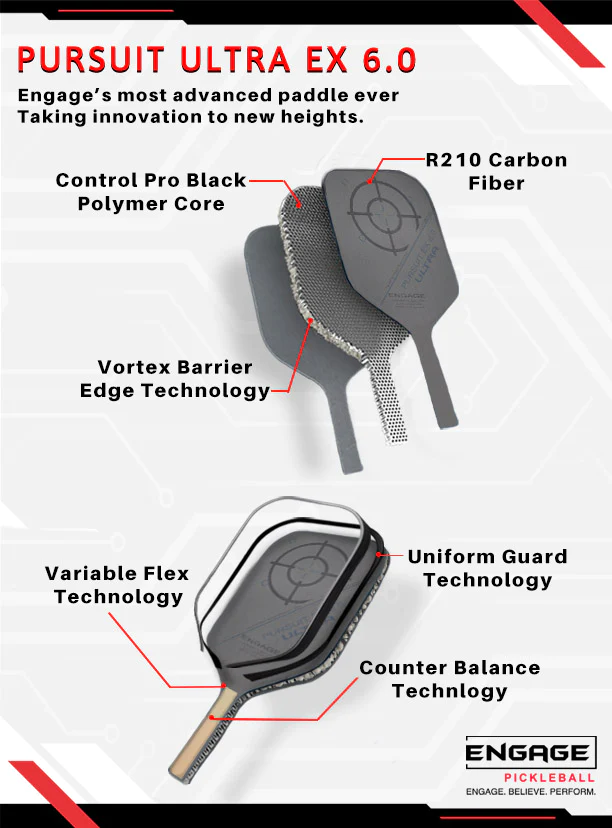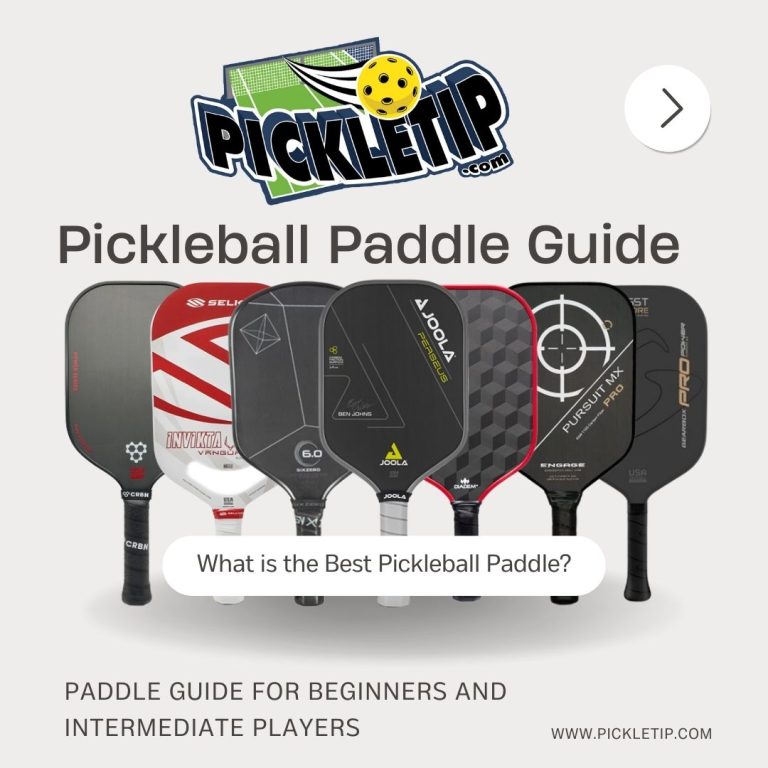Pickleball Paddle Grip – Everything You Need to Know
One of the most critical aspects of a paddle is its grip. In this article, we will explore everything you need to know about pickleball paddle grip, including the best grips, tapes, overgrips, replacement options, and how to wrap and replace your grip.
What is Pickleball Paddle Grip?
The grip is the part of the paddle that you hold onto when playing. It is important to have a comfortable and secure grip on your paddle to improve your game and prevent injury. Pickleball paddle grips can be made of different materials, such as rubber, synthetic, or natural materials, and come in various shapes and sizes.
Types of Pickleball Paddle Grips:
There are several types of pickleball paddle grips, including standard grips, cushioned grips, and perforated grips. Standard grips are the most common type of grip and provide a solid grip on the paddle. Cushioned grips have extra padding to absorb shock and reduce vibration, making them ideal for players with arm or wrist problems. Perforated grips have small holes that allow for ventilation, reducing sweat and slippage.
Pickleball Paddle Grip Tapes:
Pickleball paddle grip tapes are adhesive tapes that you can apply to your grip to improve your grip and prevent slippage. There are different types of grip tapes, including rubber, synthetic, and cloth tapes. Rubber tapes are durable and provide a good grip, while synthetic tapes are softer and more comfortable. Cloth tapes are breathable and ideal for players who sweat a lot.
Pickleball Paddle Overgrips:
Pickleball paddle overgrips are thin grips that you can apply on top of your existing grip to improve your grip and absorb sweat. Overgrips come in different materials, such as rubber, synthetic, or cloth, and provide a soft and comfortable grip. Overgrips are ideal for players who have worn out their grip or want to try a different feel without replacing their grip.
Pickleball Paddle Grip Rings:
Pickleball paddle grip rings are small rubber rings that you can slide onto your grip to improve your grip and prevent slippage. Grip rings come in different sizes and colors and can be easily removed or replaced.
Pickleball Paddle Grip Bands:
Pickleball paddle grip bands are personalized bands that you can wrap around your grip to improve your grip and personalize your paddle. Grip bands come in different colors and designs and can be customized with your name, team logo, or favorite phrase.
How to Wrap and Replace Your Pickleball Paddle Grip:
How to Wrap Your Pickleball Paddle Grip
Wrapping and replacing your pickleball paddle grip is easy and can be done in a few steps. To wrap your grip, start by removing the old grip and cleaning the handle of your paddle with a damp cloth. Then, take your new grip tape and begin wrapping it around the handle, starting from the butt end of the handle and moving towards the neck. Be sure to wrap the tape tightly and evenly, overlapping each layer slightly as you go. Once you reach the neck of the handle, use a pair of scissors to cut off any excess tape.
How to Replace Your Pickleball Paddle Grip
To replace your grip, start by removing the old grip using a grip remover tool or a razor blade. Be careful not to damage the handle of the paddle while removing the grip. Once the old grip is removed, clean the handle with a damp cloth and let it dry. Then, take your new grip and slide it onto the handle, starting from the butt end of the handle and moving towards the neck. Be sure to align the grip properly and smooth out any wrinkles or air pockets as you go. Once the grip is in place, use a finishing tape to secure the top and bottom of the grip.
Frequently Asked Questions About Pickleball Paddle Grips:
Q: How often should I replace my pickleball paddle grip?
A: It depends on how often you play and how sweaty your hands get. If you play frequently and your hands sweat a lot, you may need to replace your grip every few months. If you play less frequently and your hands don’t sweat as much, your grip may last longer.
Q: Can I use regular tape instead of grip tape?
A: No, regular tape is not suitable for use as a pickleball paddle grip. Grip tape is specially designed to provide traction and absorb sweat, which is essential for maintaining a good grip on your paddle.
Q: Can I personalize my pickleball paddle grip with grip bands?
A: Yes, there are many grip bands available that can be customized with your name, logo, or favorite design. Personalizing your grip can be a fun way to express your personality and add some flair to your paddle.
Q: What is the difference between a grip and an overgrip?
A: A grip is the main layer of material that covers the handle of your paddle. An overgrip is a secondary layer of material that is added on top of the grip to provide additional cushioning and absorb sweat. Overgrips are typically thinner than grips and are designed to be replaced more frequently.
Having a good grip on your pickleball paddle is essential for playing your best game. Whether you need to replace an old, worn-out grip or want to personalize your paddle with grip bands, following the steps outlined in this article will help you wrap or replace your pickleball paddle grip with ease.







